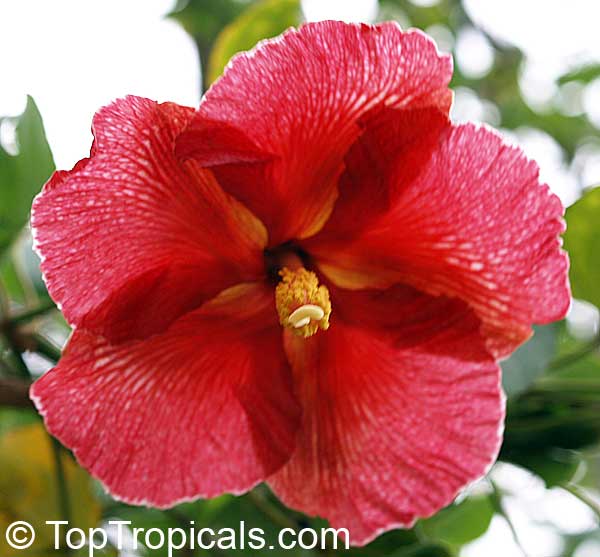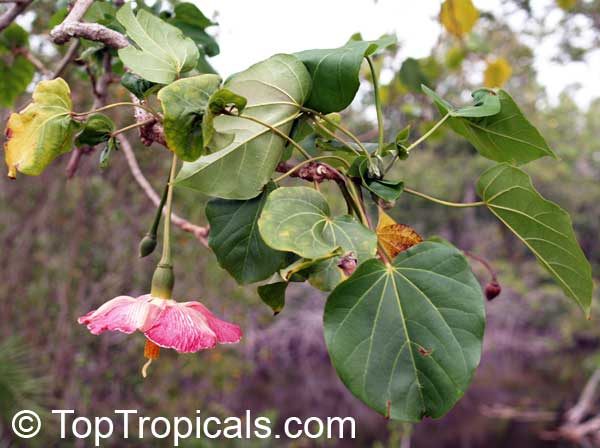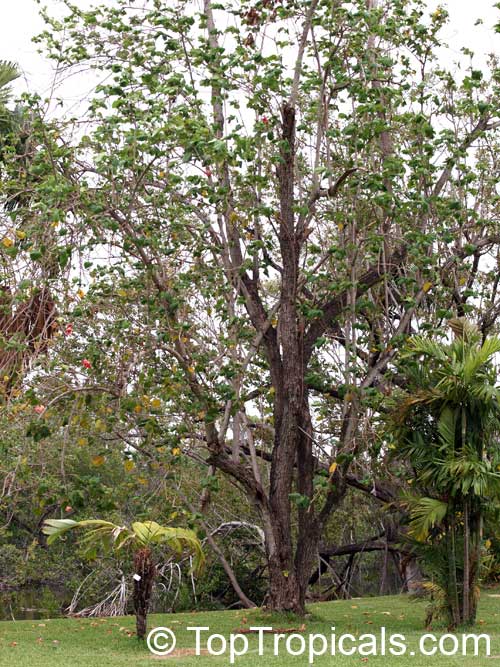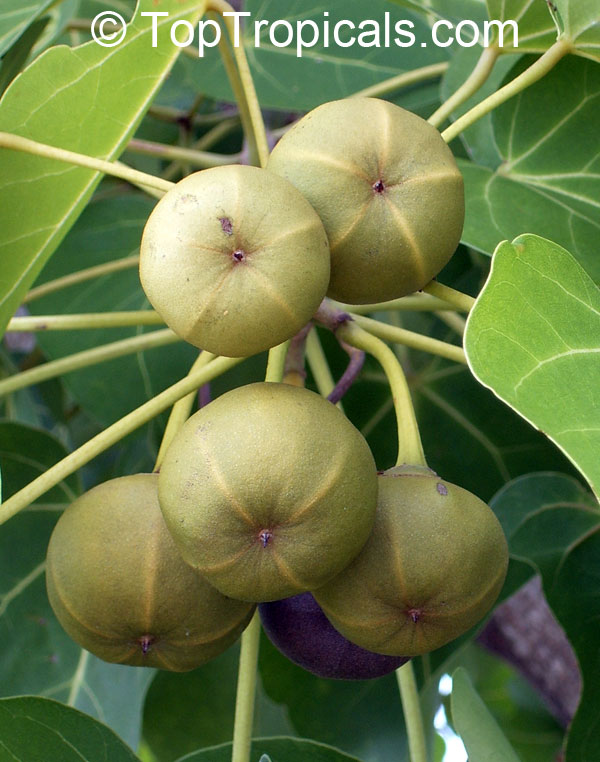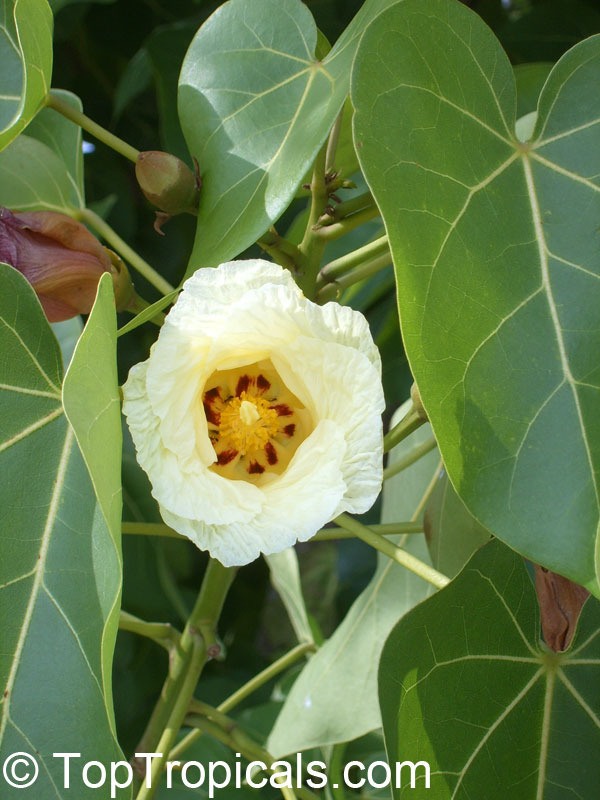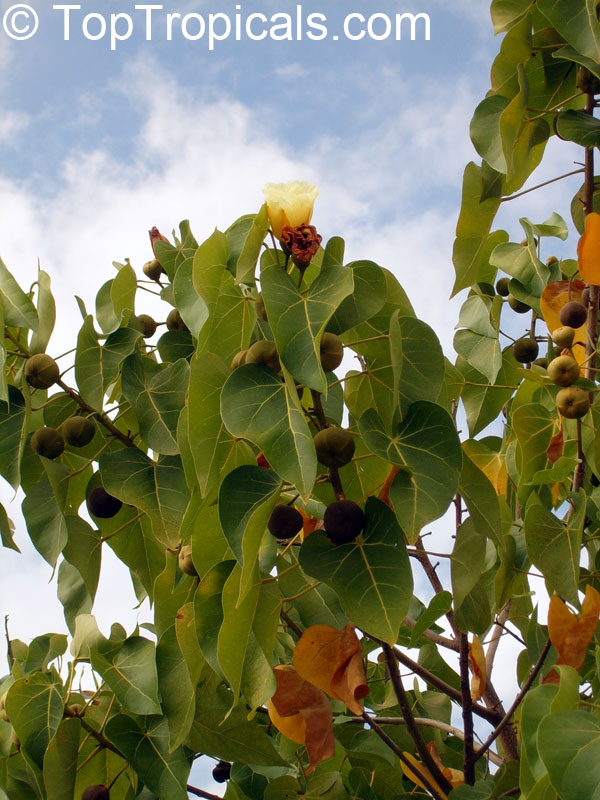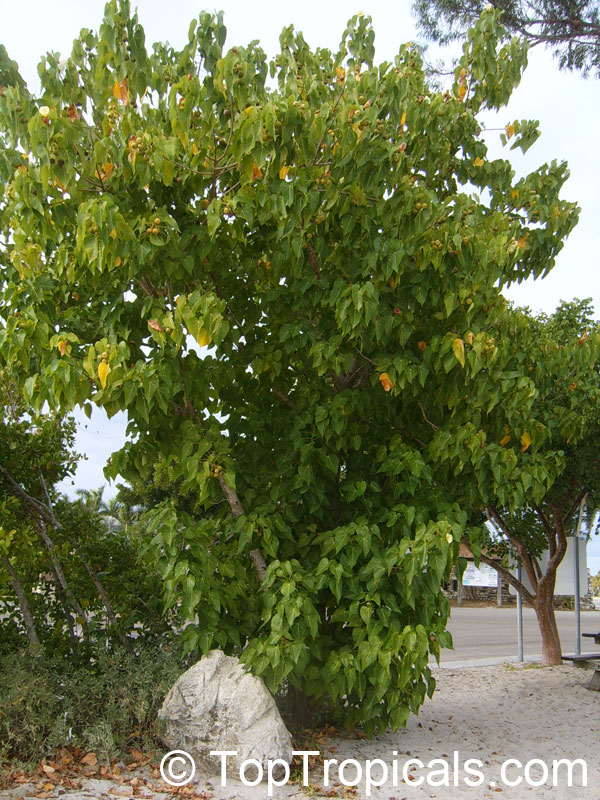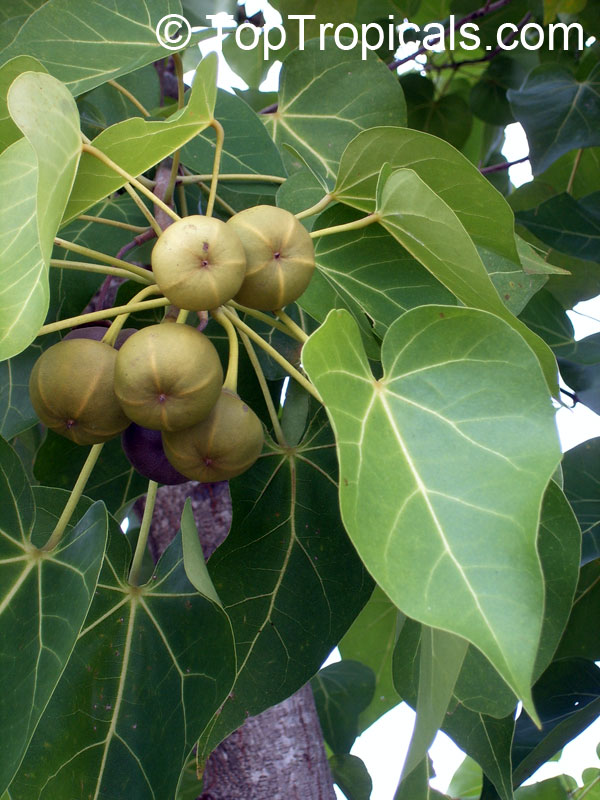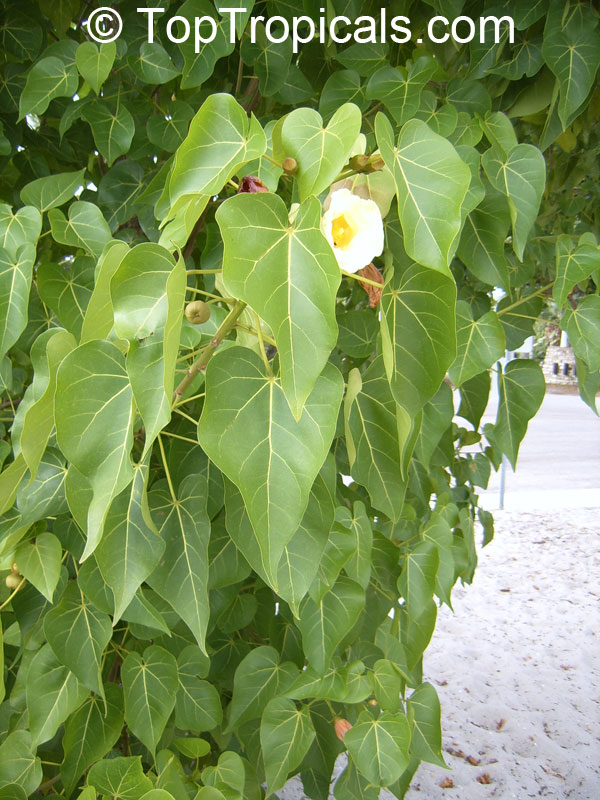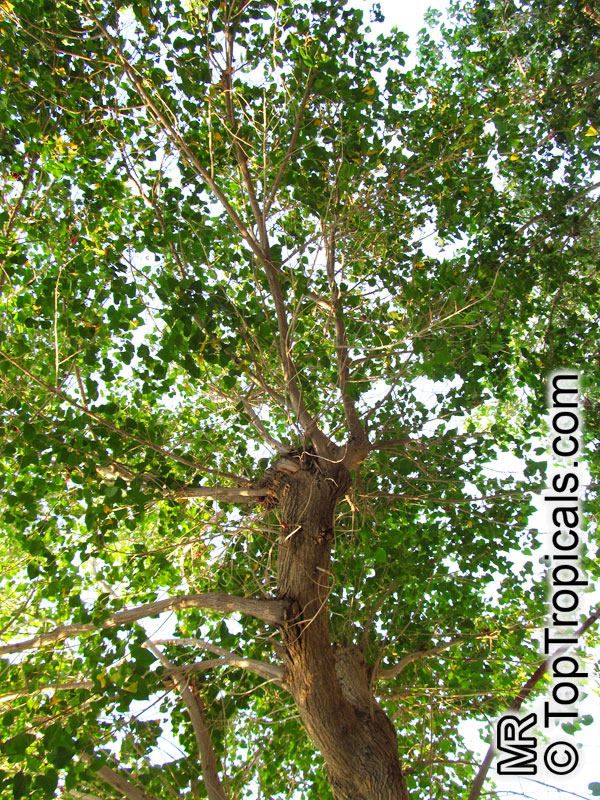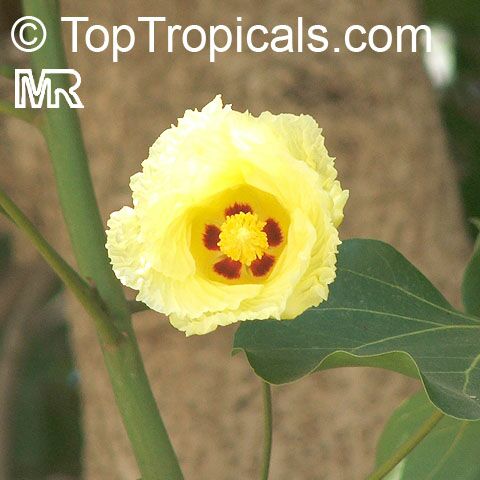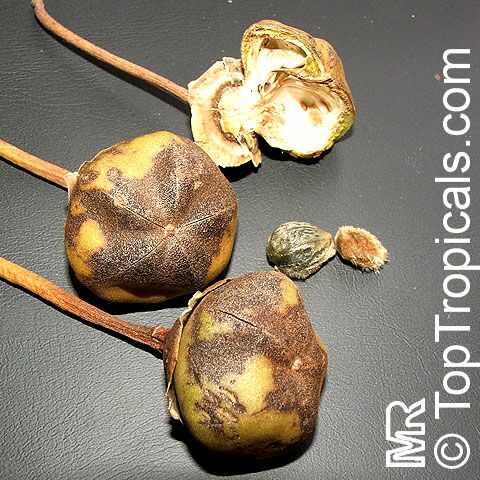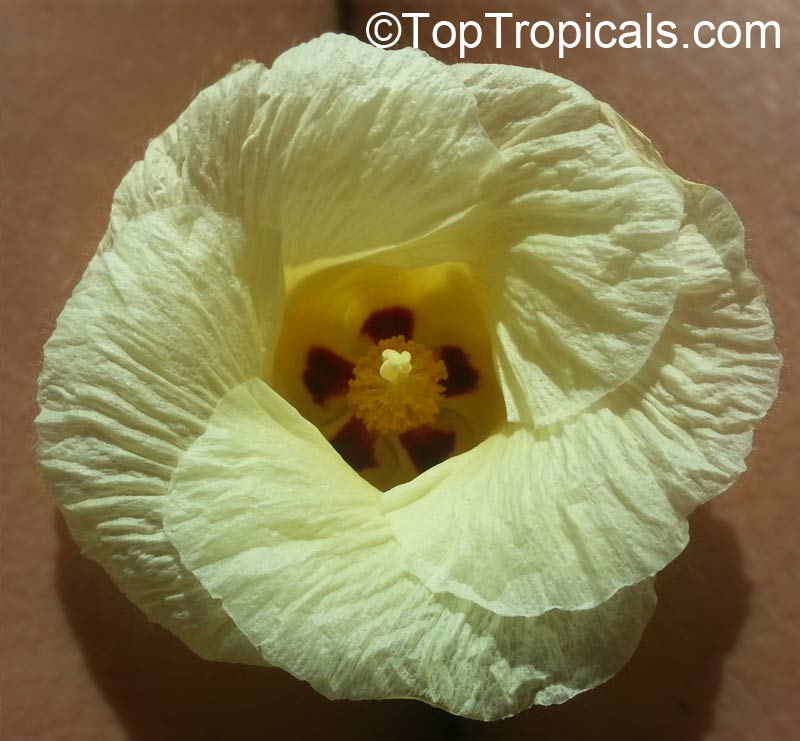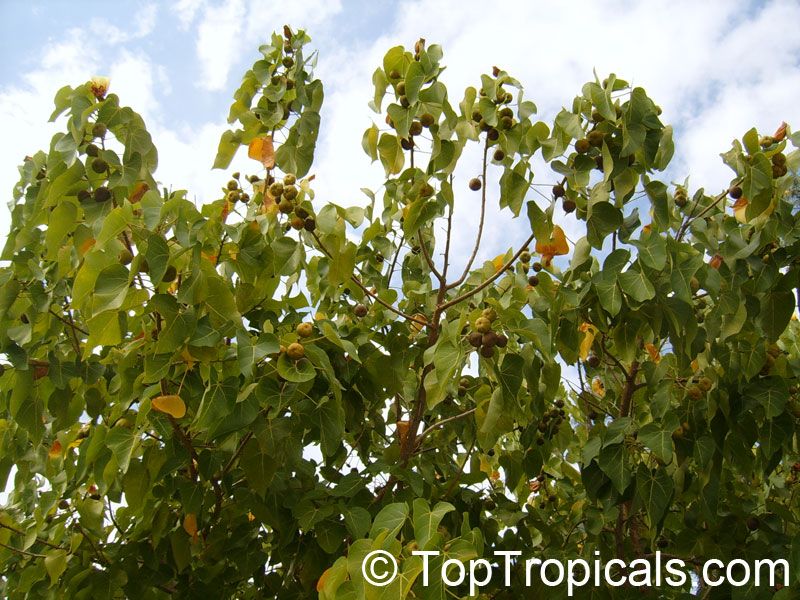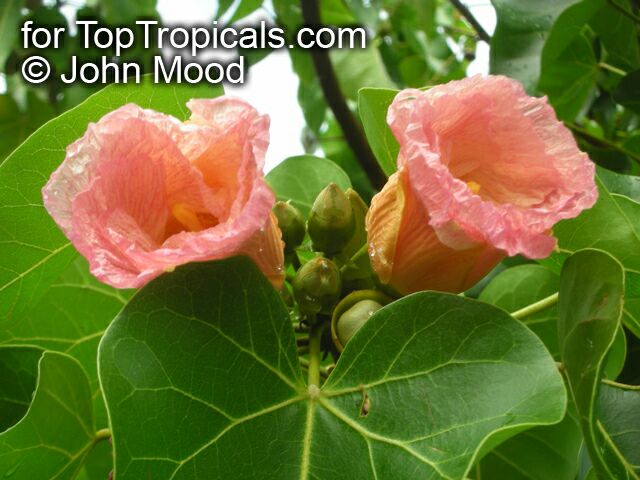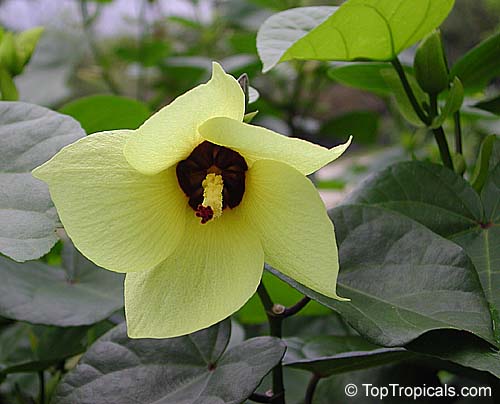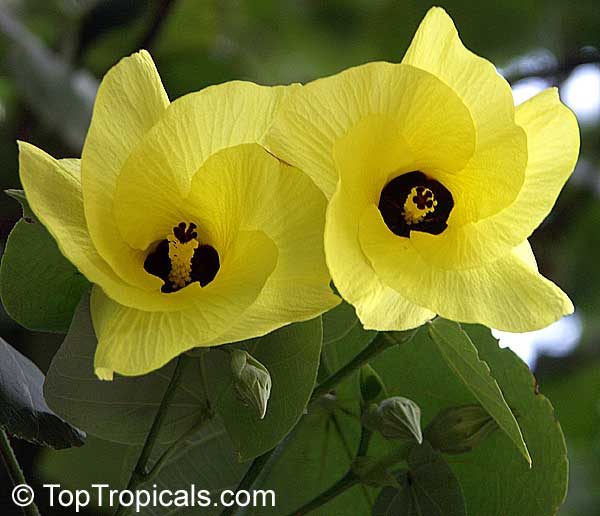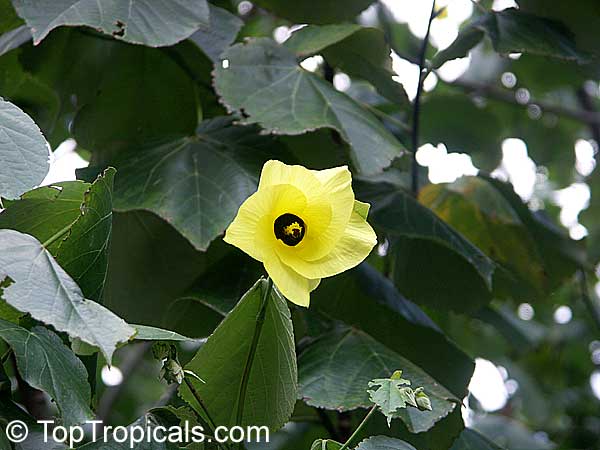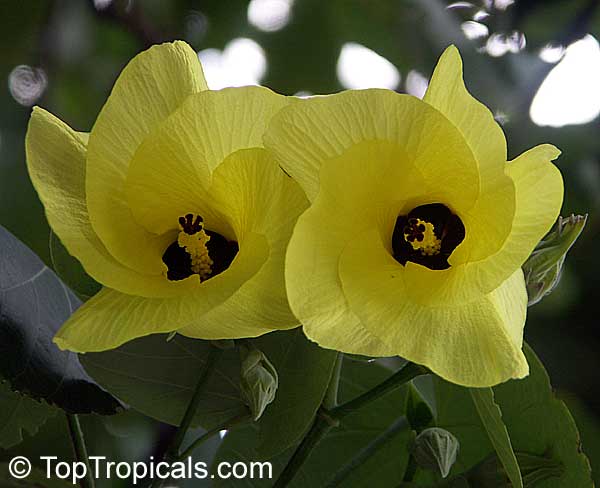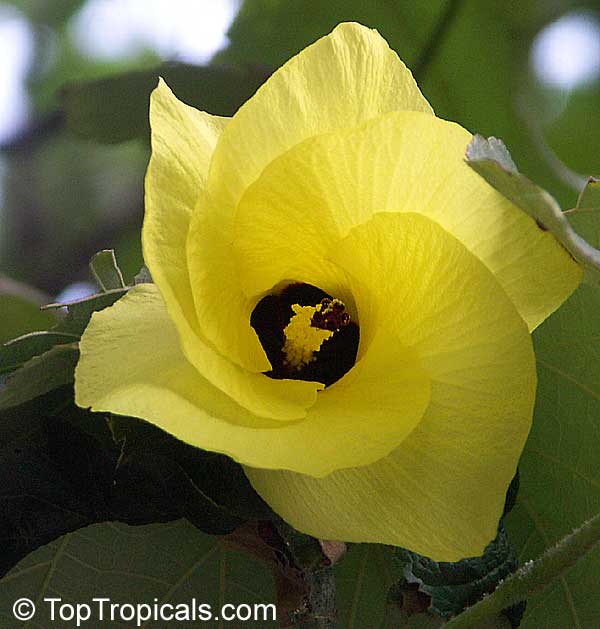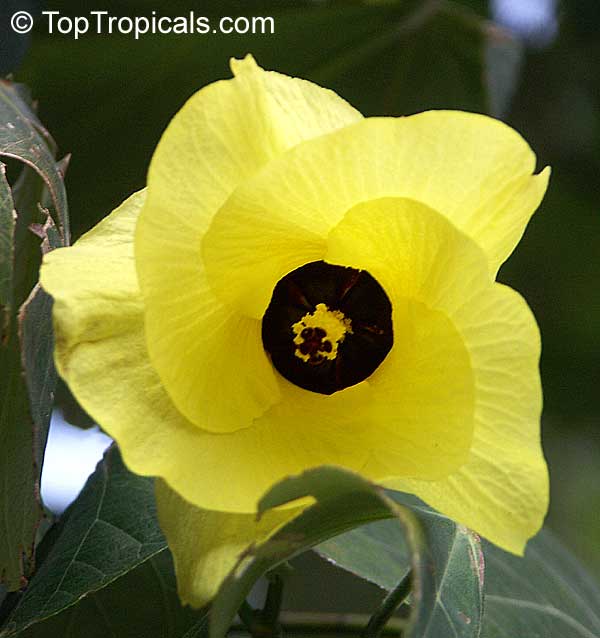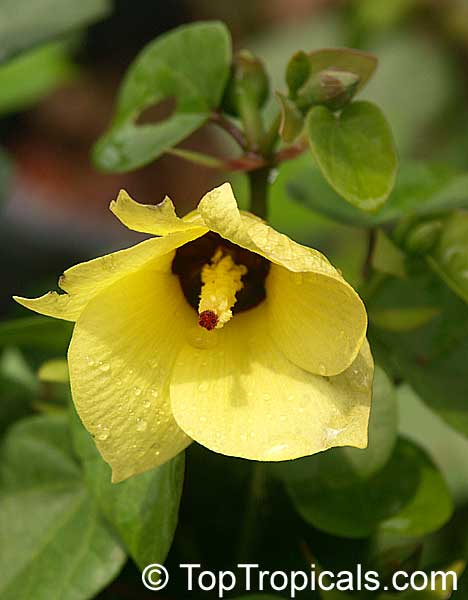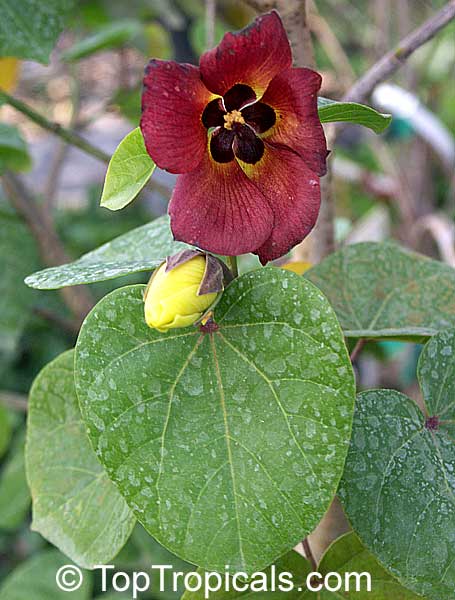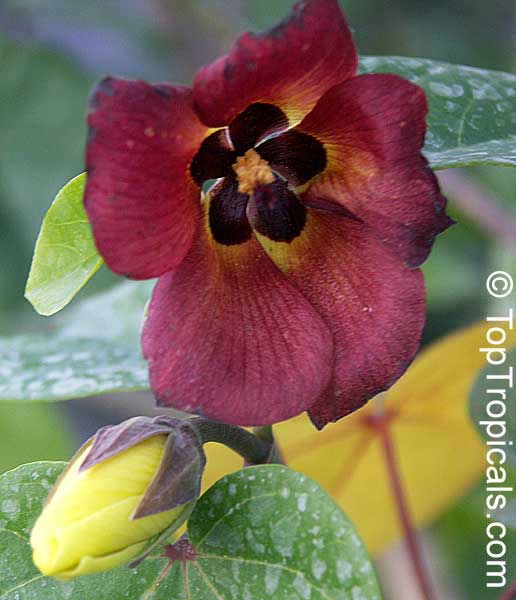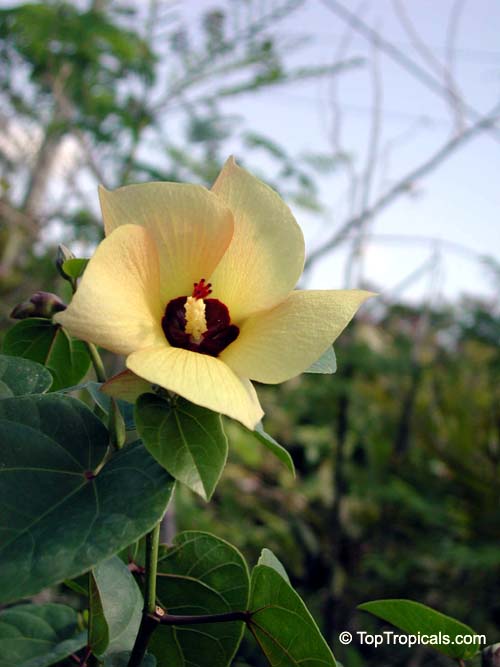Thespesia - Plant Encyclopedia Results
Top Tropicals Plant Encyclopedia
| Number of plants found: 4 |
Botanical names: Thespesia acutiloba, Thespesia populnea var. acutiloba
Common name: Small-leaved Tulip-tree
Family: Malvaceae
Origin: South Africa








Thespesia acutiloba is similar to Thespesia populnea except that leaves with three sharply-pointed lobes. Small drooping tree with yellow to orange Hibiscus-like flowers.
Botanical names: Thespesia grandiflora, Montezuma speciocissima
Common name: Maga
Family: Malvaceae
Origin: Puerto Rico







This giant hibiscus is endemic to the humid forests of Puerto Rico.
Thespesia grandiflora is the official national flower of Puerto Rico.
Botanical names: Thespesia populnea, Hibiscus populneus
Common names: Seaside Mahoe, Portia Tree, Milo
Family: Malvaceae
Origin: India







Known as Milo in Hawaii, the Thespesia populnea (Seaside Mahoe) is often planted in front of Buddhist Temples. Originally from the Old World, this fast-growing species was brought to Hawaii by early Polynesian settlers and was considered sacred. It is a hardy shrub that grows into a small tree with dark-red wood, spreading branches and an attractive grain. The fruits, flowers, young leaves and timber are all edible, with the latter famously used to create wooden food bowls and utensils, and it has a range of traditional medicinal uses.
Tannin, oil and a dark red resin exude from its bark and its showy red, crimson, vinous and yellow-orange flowers attract butterflies and hummingbirds. This tree is an excellent feature in gardens because of its resistance to salt and termite damage, as well as its ability to cast welcome shade. It is well suited to seaside locations and can be successfully grown in USDA Zones 9-11.
Plant Thespesia populnea in full sun and a location where it can receive regular water in well-drained soil. Fertilize it twice a month with a balanced fertilizer for optimum results and insure it is adequately protected in colder climates. Make sure the pot has ample drainage and lightweight soil mix and that a frost-resistant insulation barrier is used.
Botanical name: Thespesia Portica var. asiatica
Common names: Asian Portoe, Dwarf Asian Portia, Sea Hibiscus
Cultivar: Asiatica
Family: Malvaceae







Asiatic Portoe (Thespesia Portica Asiatica) is a flowering large shrub or small tree reaching a height of 5-10 ft. The bush thrives in full sun and is considered to be a very resilient plant with regular watering. The beauty of this plant lies in its eye-catching yellow, orange flowers that attract butterflies and hummingbirds. It is also a salt-tolerant plant, making it a great choice for seaside gardens. This plant can be grown in USDA Zones 9-11 successfully.
For planting in a pot in colder regions, it is best to place the pot in a sheltered area with lots of sunlight. Make sure to check the soil moisture every few days and provide a generous amount of water. Increase the watering frequency in warmer months. It is also important to note that the plant will require more watering in the winter when it is not actively growing.
When caring for Asiatic Portoe, it is important to prune the branches to maintain its desired shape and size. Additionally, cut down any dead or damaged branches to promote healthy growth. You may also need to fertilize the shrub to replenish the soil nutrients and ensure vibrant blooming.
Asiatic Portoe is a resilient flowering shrub that is an ideal choice for gardeners who want to add a touch of tropical allure to their garden. It is a great option, offering an impressive display of bright yellow and orange flowers that attract butterflies and hummingbirds. This attractive, low-maintenance shrub is sure to add drama and beauty to any garden.
Use link to repeat this search:
https://toptropicals.com/cgi-bin/garden_catalog/cat.cgi?find=Thespesia&search_op=and&keyword_op=and&language=e&number=10
&no_change_lang=1&user=tt&sale=1&first=0

